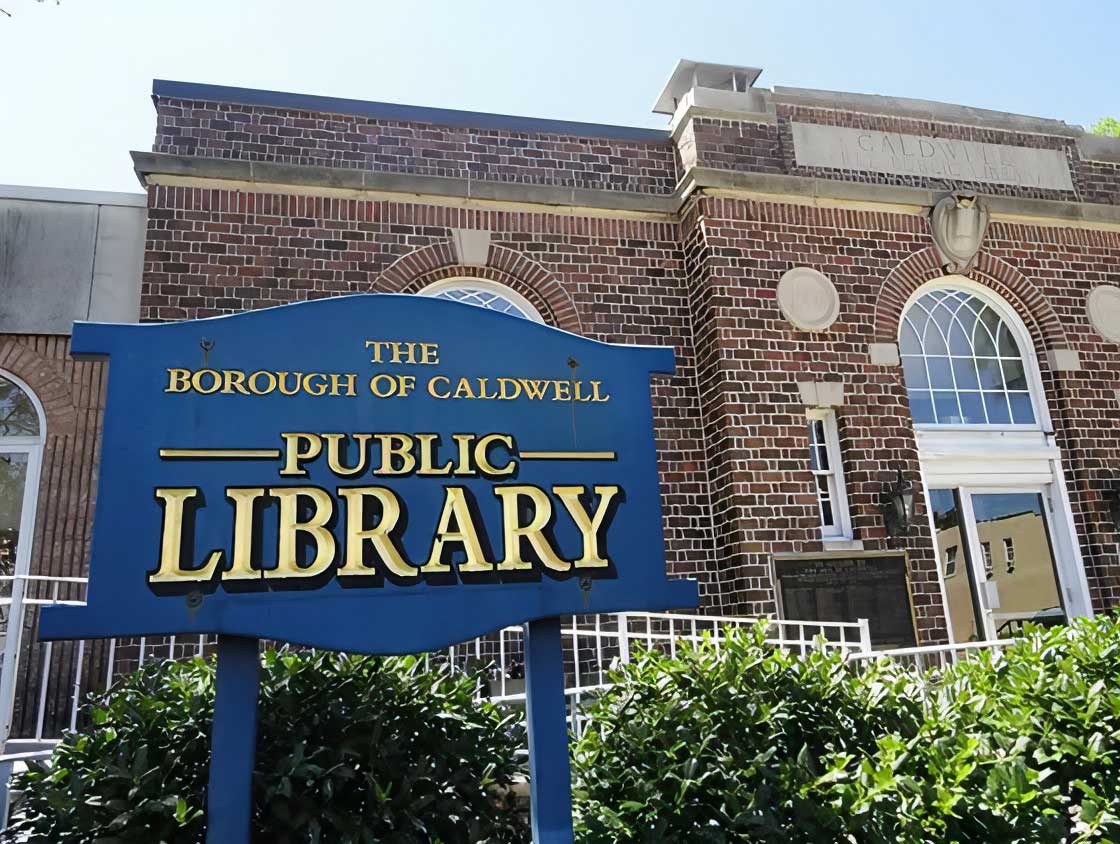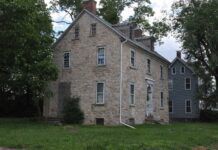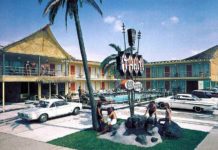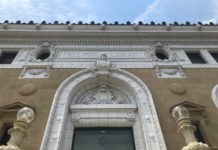
The residents of Caldwell are facing the potential loss of a landmark in its historic downtown — a beloved Carnegie library.
The Caldwell Free Public Library, which received local landmark status only five years ago, has fallen into structural disrepair and may need to abandon the building constructed in 1917. Last month, the library was named one of the state’s 10 most endangered places by Preservation New Jersey.
The library, designed by local architect Lynn Grover Lockward, suffered two major floods in the last four years, Thomas Banker, the borough business administrator, told Jersey Digs. The last inundation made national news when it caused extensive damage due to Ida.
The library’s new home could be located at a newly built municipal building designed by Cozzarelli Cirminiello Architects. While the facility is prepared, the library will operate out of a temporary trailer at 24 Smull Avenue.
“We were already well along in planning for a new municipal facility,” Banker said. ”The library board came to us and said, We need to be included in your plans because we really don’t think restoring the library in this location, in this building, is feasible.”
The board of trustees hopes the new location will nod to its origins.“We want to find ways to preserve elements from the original building and to integrate them into our new space,” the board said in a statement.
Local preservationists, however, are still fighting to save the building from demolition. Frank Gerard Godlewski, historic preservation commissioner, said the plans for a new municipal building were “over scale” and “out of character” with Caldwell. Addressing the attendees at the Preservation New Jersey announcement, Godlewski faulted the borough council for using the Area in Need of Rehabilitation designation to circumvent the local HPC.
Between 1886 and 1919, Carnegie financed the construction of 1,679 public libraries in every state except for Delaware and Alaska. The first to open its doors was in Braddock, near Carnegie’s Pittsburgh home. In New Jersey alone, there are 36 Carnegie libraries and in each of these places locals boast about them in the same way “Olmsted parks” are a point of local pride.
While some of the libraries funded by the Carnegie Foundation repurposed existing buildings, the hallmark of most Carnegie libraries is that they were newly built, grand, and neoclassical in design. This was a departure from most libraries that came before.
“He wanted libraries housed in beautiful buildings, with big windows and ample light,” Fishwrap reads. “This was a change for many towns that housed makeshift libraries in churches, stables, or at the back of shops.”
The youngest of the Carnegie libraries were built just over a century ago, meaning the fate suffered by Caldwell could signal what is to come for his other libraries, unless these landmarks are restored. Many Carnegie libraries have already outlived their uses as libraries, but serve new functions. In fact, the former Carnegie library in Greenfield, Indiana, is now a restaurant and the one in D.C. is an Apple Store. The one in Montclair is now a universalist church.
 The Carnegie library in Orange, New Jersey, designed by McKim, Mead, and White, finished in 1902, is the oldest library in Essex County, the Nation Register nomination reads. It, too, is beginning to show its age.
The Carnegie library in Orange, New Jersey, designed by McKim, Mead, and White, finished in 1902, is the oldest library in Essex County, the Nation Register nomination reads. It, too, is beginning to show its age.
The library was closed for a year after the entire staff was terminated. The mass firing came weeks after a Jersey Digs report alleged mismanagement and unaddressed repairs, such as the leaks and the air conditioning.
At the building’s dedication, a Montclair pastor Armory Bradford gave a speech that captures the Carnegie philosophy toward libraries and philanthropy. “Into this building someday a young man from a hat shop with a soul as yet untouched by light, will aimlessly wander and open some book — he knows not and cares not what — but will be the birth of that soul,” Bradford said.


